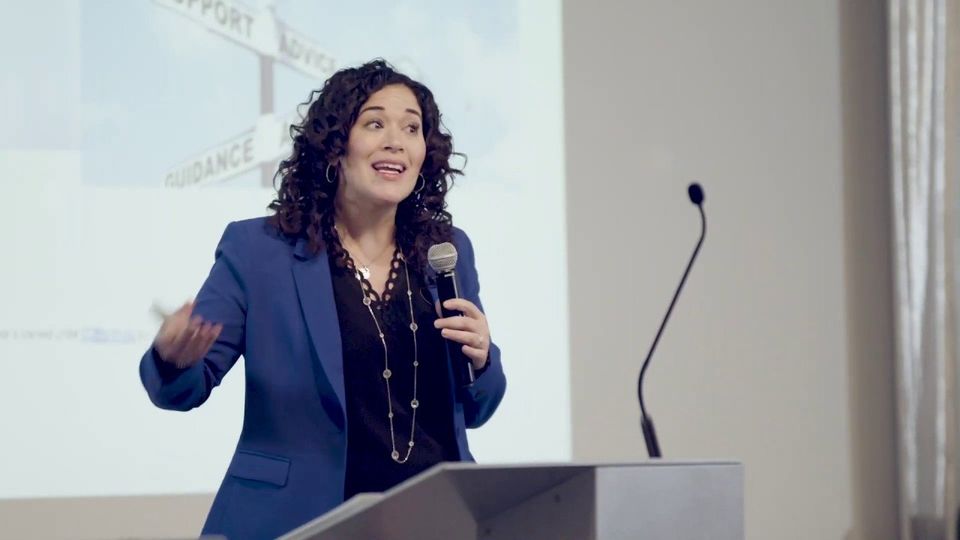Every business starts with a great idea. Continued growth is built on the backs of a great team!
We believe that people are your organization's greatest resource. Like any resource, you can waste it or you can maximize it, and see an amazing return on your investment.
Employee Solutions that Build Trust!
The Happy Leader Method
Helping you build a winning culture through Efficiency, Effectiveness and Engagement.
- Strategy and Process
- Training and Development
- Productivity and Results
Your Trust is Our Priority!
What we do!
We know you want to have a great culture for your employees and your customers! We will partner with you to get that!
Discovery Conversation
An initial chat to understand your pain points and how you can eliminate them!
Recommendations
We have a solution for every budget and organization size. We will find one that works for you!
Action
Using the approach of “Understand, Build, Accelerate” a unique plan will be created for your business and executed collaboratively
Long Term Supports
As part of the “Happy Leader Family” you will have access to ongoing resources, tools and updates.
At Happy Leader Enterprises we are your partner in designing a winning culture that works for you!
Working with leaders who know people matter, to create environments that support people, build trust and foster relationships. We are here to support your change management initiatives and projects to ensure successful execution of the change plan.
Leadership Development
Supporting the growth of your leaders. Tools and coaching to ensure current results and build a culture of growth and succession.
Sales and Business Development
Sales is king. We will help you create a sales culture people want to be a part of! With the “Everybody Wins” approach; “sales” will no longer be a bad word!
As a leader time and energy are the two greatest resources you can maximize.
Try the Happy Leader Productivity Calculator to get your free energy rating and identify potential time wasters!


Latest news and articles

By Melissa Maloney
•
28 Dec, 2022
Inclusion has a significant impact on employee engagement in the workplace. When employees feel included and valued, they are more likely to be motivated and committed to their work, leading to higher levels of productivity and overall job satisfaction. In contrast, a lack of inclusion can lead to disengagement and a negative work environment, ultimately harming the success and culture of an organization. One way that inclusion promotes employee engagement is by fostering a sense of belonging. When employees feel like they are a part of the team and that their contributions are valued, they are more likely to feel motivated and committed to their work. This sense of belonging is especially important for employees from diverse backgrounds, who may otherwise feel marginalized or unsupported in the workplace. By promoting inclusion and diversity, organizations can create amore welcoming and supportive environment that helps all employees feel valued and included. Inclusion also helps to create a culture of trust and respect within an organization. When employees feel that their ideas and perspectives are valued and considered, they are more likely to trust their colleagues and leadership. This trust is essential for building strong and productive teams, as it allows employees to feel comfortable sharing their thoughts and collaborating with others. A culture of trust and respect also helps to reduce conflict andimprove communication, leading to a more positive and productive work environment. In addition to fostering a sense of belonging and building trust, inclusion also helps to create a more innovative and adaptable organization. By embracing diversity and encouraging different perspectives, organizations can tap into a wider range of ideas and approaches, leading to more creative and effective solutions. This is especially important in today's business environment, where the ability to adapt and innovate is critical for success. Three simple actions that organizations can take to create as a step toward an inclusive workplace are: 1. Implement policies and practices that promote diversity and inclusion: This can include training programs, employee resource groups, and diversity and inclusion committees. These initiatives can help to create a more welcoming and supportive environment for all employees, and encourage the valuing of different perspectives and backgrounds. 2. Engage employees in discussions about diversity and inclusion: Encourage open communication and dialogue about diversity and inclusion within the organization. This can involve soliciting feedback and ideas from employees, and giving them the opportunity to share their thoughts and experiences. 3. Make diversity and inclusion a priority in the hiring and promotion process: Consider diversity and inclusion when making hiring and promotion decisions. This can involve implementing diversity targets and goals, and actively seeking out candidates from underrepresented groups. By building a diverse and inclusive team, organizations can create a more positive and productive work environment for all employees. Creating an inclusive workplace requires a commitment to diversity and inclusion at all levels of the organization. By implementing policies and practices that promote diversity and inclusion, engaging employees in discussions about diversity and inclusion, and making diversity and inclusion a priority in the hiring and promotion process, organizations can create a more welcoming and supportive environment for all employees. This is essential for building a productive and engaged workforce that is able to meet the challenges of today's fast-paced and rapidly changing business environment.

By Melissa Maloney
•
29 Apr, 2020
There are a lot of people writing about how to sell during the pandemic. Or what does it look like when the world “re-opens” from a sales perspective. I have spent a lot of time researching and reading current trends and predictions from some of the top consulting firms and wanted to weigh in on this topic. But, in true Happy Leader Enterprises fashion I want to take a slightly different approach. I am going to break this down into what remains the same (because if you aren’t doing this already you should) and what will likely change. I also feel like we all need to be cautious in taking any projections as fact. I think if there is one thing everyone agrees on right now, it’s that we have never been through this before. We will continue to take lessons from this experience, and what we forecast now, may still need to evolve and change. Let’s begin! What Should Stay the Same: Don’t Stop Selling: An empty pipeline takes longer to refill then continuously adding to the pipeline. Think about it. If you have a pail of water that is catching the rain. And the pail is full. Every time it rains, it gets topped up and never runs dry. However, if for some reason it doesn’t rain for a long time, and the bucket dries out, it will take a while to fill it back up. Sales leads and business development is the same, you need to be filling the pipeline each day and ensuring that it never goes dry. It is always better to have a pipeline that is too full than a pipeline that is empty. Mindset, Mindset, Mindset: Sales is a head game. It was a year ago, it is now, it will be a year from now. The best sales people know how to play the game and not get in their own way by letting negative thoughts take over on the bad days. They understand mental toughness. A great sales person has strategies in their back pocket for what to do on the down days and how to ride the wave on the high days. This mindset will help right now as well. Even though it may be tested. Remember; you know the value your product brings… keep bringing value and mission and you will be better able to help your customers come with you! Your Customer is King: Without your customer you don’t have a business. This means they are king (it does not mean they are always right). However, you want to treat them with king level value. Appreciate their business, be grateful for their time, understand they could choose to buy from somewhere else. Consider their experience, consider their current needs, consider their current emotional state, how can you bring more value to them? How can you make their life easier? How can you save them money? How can you save them time? If you can save them time, money and make their life easy… you may also be king to them! Balance Optimism and Realism: As leaders, we need to be optimistic. We need to believe what is possible. Always! We need to balance that belief in possibility with the realism of what is actually happening. If things are not going well, we need to be able to see that. If there are obstacles in the path, we need to look at those obstacles, challenge them, but admit they are there than, find a solution for them. There are obvious challenges right now, so being honest about those challenges is needed, while also creating optimism about how you are handling them, or even how you intend to. Reflect and Measure: Slowing down enough to take time to reflect is always critical. Right now, it is no less critical. You need to take the time to reflect, evaluate and act. You need to take the time to measure what is working and what isn’t working. Understanding KPI’s may be slightly different right now, and measuring success may have different metrics, you need to measure to know the new normal and then have a starting point on what to reflect against going forward. What May Change: How Your Customer Reaches You: It is safe to assume that for the time being and likely into the future there will be less people “walking” into a business or for an outside account rep to walk into the business of a client. With people working from home for the indefinite future, how your customer reaches you will likely change. This needs to be considered in your marketing plans. As an example; as a grocery product, if you normally sampled in stores, they are predicting more than 31% of people will continue to order online. How will you reach customers if not through sampling? Grocery stores; how can you still offer sampling to online orders? There is a high prediction for more online interaction for customers, have you identified what that looks like for you? Your Messaging to Your Customer: Tone is likely going to be critical for a while. I really caution people right now to make sure your tone and message makes sense. I know you likely had a 12-month marketing plan; you may want to reevaluate it. Ask yourself; how will my customer react to this? As an example, I saw an online coach market for “Surviving the Pandemic” however the image chosen was of her laughing. It didn’t sit right. Does your imaging match the tone and message needed? You may also need to plan in the short term, since current events are changing quickly and what sits well today, may not sit well tomorrow. How You are Filling Your Pipeline: This is going to be something that direct sellers and account managers are very much going to have to reflect on. The reality is, there is some space to be had on social media, however that message space may get crowded. There may be limited networking events to meet face to face for a while. How else can you connect and reach out to your customer? What is your approach to gain their attention and interest? How are you optimizing your website for cell phone use? Is there a way for you to connect to your customer online? Over the phone? How will you attract your inbound traffic, as outbound attraction will be significantly different? The Length of Your Sales Process: As we start to re-open the economy the length of the sales process for some companies may shift. Predictions of consumer behaviour are predicting a decline in some areas, but an overall decline in people’s spending plans at least for the near future. Knowing this, it may take you longer to work through a sales cycle especially, if you traditionally have a short to medium length cycle (less than 1 week to one month). Knowing that people may make decisions more cautiously, they will likely reply on additional information and research, seek more time to make a decision and not feel good about any “pressure” sales approaches. Look to ways to increase urgency in the buying cycle by increasing value and connecting to the value a consumer will gain for THEM if they buy sooner, not for you. The Engagement of Your Team: Engagement of sales teams is usually closely connected to their success. Sales people (especially great sales people) like to win and feel great when they do. Knowing this and creating other measures of success will be critical outside of just getting the sale. Managing closely how your sales teams are feeling in the face of these changes and challenges will be key to their engagement. Sales people need to see the path to success, and since it may be grey right now, you will need to be prepared to support them through this journey. Melissa Maloney, Founder of Happy Leader Enterprises is a Sales and Operations expert with over 20 years of experience driving a winning sales culture. If you would like Happy Leader Enterprises to support your business with your current and future sales strategy connect with Melissa directly at melissa@melissamaloney.ca or visit www.happyleader.ca

By Melissa Maloney
•
21 Apr, 2020
I posted the original version of this post almost a year ago. Obviously, a lot has changed since then, and in the business world the last 6 weeks have felt a year long to most of us. I felt there was a need to update this and re-post. Given the fact that trust in our teams is more needed than ever in the work from home world. Speedy decisions and constant change have become the norm during the reality that is now. Leaders are being challenged daily with the ability to not only deliver a quality product, but to also support their teams through what most are saying is the most challenging time in business history. Leaders that can build trust with both their employees and their customers throughout this time, are going to see those efforts pay off. The rules have changed, and the bullseye is moving, pretty much, daily. The question becomes… are you going to lead from the front in this situation? Or are you going to lag a little behind and follow? In order to stay in the lead, or in order to get in the lead you need to have a strategy. That strategy likely involves changes, and it also likely has many moving parts, both of these things require trust. If you don’t have a team of people you trust how do you move a project forward? If your people don’t trust you, how do you get them onboard with changes? This factor for trust is so limiting that it is critical to ensure you have a plan with your leaders, or with yourself on what you do to create an environment and a culture that fosters trust. Only then will you be able to get farther ahead. Here are 5 techniques I use to build trust with my workplace relationships (they can also work with all relationships… the great thing about trust- its universally needed!). Communicate, Communicate, Communicate I have added this 5th approach and made it the first strategy, because right now, I believe this is the ONE MOST CRITICAL THING YOU NEED TO DO! You need to communicate often and you need to communicate clearly. This may mean you are communicating that right now you don’t know. It may mean you are communicating that you have nothing to communicate. However, people are scared, anxious and looking for answers. The right strategy in the current state is more information then less, and recognizing that if people have a gap in the communication then they will fill that gap with their own stories. In the current state- those stories will likely be negative and not positive. Trust is built on the backs of communication. Remember this. Do what you say you will This is the simplest way I believe you can create trust. If you say you will do something, do it. Without being reminded. People are more likely to forgive error then they are to forgive incompletion. Knowing this, create a system for yourself (or let me help you do it) so that you can ensure the simplest things are followed through on. This will go farther then you likely expect! Give people a chance to show you what they can do! Too often leaders (and parents) don’t give people the opportunity to demonstrate how amazing they are. When you micro-manage a project, or you only delegate limited tasks, you limit the chance for people to show you how amazing they are. If you don’t give people the opportunity to take on something of importance and value (once they have earned the privilege) then they will feel like you don’t trust them. This level of empowerment needs to be laid out in a way that breeds success, but that also demonstrates a level of risk as well. In the current state, trusting that people are doing their best from home will go a long way. Creating too many “check ins” will make people feel you don’t trust them. Be consistent With trust, consistency is key. People need to know what to expect in order to be able to execute with confidence. If one day an action or behaviour generates one response and another day it generates a different response, how is trust to be built? This is one of the most important things a leader can do, act consistently and act with intention. Reaction is the nemesis of trust. Be on their side One of the easiest ways that we can build trust it to build an emotional connection with employees that allows them to see we are on their side! This is super important with the youngest workers. They have an innate need of feeling safe in order to help create a culture for their success. I suggest you show people you are on their side, by allowing them an opportunity to share what they feel regularly at meetings, creating a safe space for them to provide you with feedback, and also by understanding what is important to them in their lives (and helping them get it). I have created a tool to help you with this. Reach out and I can send it to you! Creating trust needs to be built into every person’s development plan, but it also needs to be an intentional operational decision as to what trust looks like in your workplace and how will it be strategically attained. I would love to support you in your trust culture, reach out anytime! Melissa Maloney is the founder of Happy Leader Enterprises; a consulting firm committed to helping your organization impact its culture through efficiency, effectiveness and engagement. Check out more posts and resources at www.happyleader.ca
Ready to engage in the first step to discovery?Let’s connect!
Contact Us
Thank you for contacting us.
We will get back to you as soon as possible.
We will get back to you as soon as possible.
Oops, there was an error sending your message.
Please try again later.
Please try again later.
RECENT POSTS

By Melissa Maloney
•
28 Dec, 2022
Inclusion has a significant impact on employee engagement in the workplace. When employees feel included and valued, they are more likely to be motivated and committed to their work, leading to higher levels of productivity and overall job satisfaction. In contrast, a lack of inclusion can lead to disengagement and a negative work environment, ultimately harming the success and culture of an organization. One way that inclusion promotes employee engagement is by fostering a sense of belonging. When employees feel like they are a part of the team and that their contributions are valued, they are more likely to feel motivated and committed to their work. This sense of belonging is especially important for employees from diverse backgrounds, who may otherwise feel marginalized or unsupported in the workplace. By promoting inclusion and diversity, organizations can create amore welcoming and supportive environment that helps all employees feel valued and included. Inclusion also helps to create a culture of trust and respect within an organization. When employees feel that their ideas and perspectives are valued and considered, they are more likely to trust their colleagues and leadership. This trust is essential for building strong and productive teams, as it allows employees to feel comfortable sharing their thoughts and collaborating with others. A culture of trust and respect also helps to reduce conflict andimprove communication, leading to a more positive and productive work environment. In addition to fostering a sense of belonging and building trust, inclusion also helps to create a more innovative and adaptable organization. By embracing diversity and encouraging different perspectives, organizations can tap into a wider range of ideas and approaches, leading to more creative and effective solutions. This is especially important in today's business environment, where the ability to adapt and innovate is critical for success. Three simple actions that organizations can take to create as a step toward an inclusive workplace are: 1. Implement policies and practices that promote diversity and inclusion: This can include training programs, employee resource groups, and diversity and inclusion committees. These initiatives can help to create a more welcoming and supportive environment for all employees, and encourage the valuing of different perspectives and backgrounds. 2. Engage employees in discussions about diversity and inclusion: Encourage open communication and dialogue about diversity and inclusion within the organization. This can involve soliciting feedback and ideas from employees, and giving them the opportunity to share their thoughts and experiences. 3. Make diversity and inclusion a priority in the hiring and promotion process: Consider diversity and inclusion when making hiring and promotion decisions. This can involve implementing diversity targets and goals, and actively seeking out candidates from underrepresented groups. By building a diverse and inclusive team, organizations can create a more positive and productive work environment for all employees. Creating an inclusive workplace requires a commitment to diversity and inclusion at all levels of the organization. By implementing policies and practices that promote diversity and inclusion, engaging employees in discussions about diversity and inclusion, and making diversity and inclusion a priority in the hiring and promotion process, organizations can create a more welcoming and supportive environment for all employees. This is essential for building a productive and engaged workforce that is able to meet the challenges of today's fast-paced and rapidly changing business environment.

By Melissa Maloney
•
29 Apr, 2020
There are a lot of people writing about how to sell during the pandemic. Or what does it look like when the world “re-opens” from a sales perspective. I have spent a lot of time researching and reading current trends and predictions from some of the top consulting firms and wanted to weigh in on this topic. But, in true Happy Leader Enterprises fashion I want to take a slightly different approach. I am going to break this down into what remains the same (because if you aren’t doing this already you should) and what will likely change. I also feel like we all need to be cautious in taking any projections as fact. I think if there is one thing everyone agrees on right now, it’s that we have never been through this before. We will continue to take lessons from this experience, and what we forecast now, may still need to evolve and change. Let’s begin! What Should Stay the Same: Don’t Stop Selling: An empty pipeline takes longer to refill then continuously adding to the pipeline. Think about it. If you have a pail of water that is catching the rain. And the pail is full. Every time it rains, it gets topped up and never runs dry. However, if for some reason it doesn’t rain for a long time, and the bucket dries out, it will take a while to fill it back up. Sales leads and business development is the same, you need to be filling the pipeline each day and ensuring that it never goes dry. It is always better to have a pipeline that is too full than a pipeline that is empty. Mindset, Mindset, Mindset: Sales is a head game. It was a year ago, it is now, it will be a year from now. The best sales people know how to play the game and not get in their own way by letting negative thoughts take over on the bad days. They understand mental toughness. A great sales person has strategies in their back pocket for what to do on the down days and how to ride the wave on the high days. This mindset will help right now as well. Even though it may be tested. Remember; you know the value your product brings… keep bringing value and mission and you will be better able to help your customers come with you! Your Customer is King: Without your customer you don’t have a business. This means they are king (it does not mean they are always right). However, you want to treat them with king level value. Appreciate their business, be grateful for their time, understand they could choose to buy from somewhere else. Consider their experience, consider their current needs, consider their current emotional state, how can you bring more value to them? How can you make their life easier? How can you save them money? How can you save them time? If you can save them time, money and make their life easy… you may also be king to them! Balance Optimism and Realism: As leaders, we need to be optimistic. We need to believe what is possible. Always! We need to balance that belief in possibility with the realism of what is actually happening. If things are not going well, we need to be able to see that. If there are obstacles in the path, we need to look at those obstacles, challenge them, but admit they are there than, find a solution for them. There are obvious challenges right now, so being honest about those challenges is needed, while also creating optimism about how you are handling them, or even how you intend to. Reflect and Measure: Slowing down enough to take time to reflect is always critical. Right now, it is no less critical. You need to take the time to reflect, evaluate and act. You need to take the time to measure what is working and what isn’t working. Understanding KPI’s may be slightly different right now, and measuring success may have different metrics, you need to measure to know the new normal and then have a starting point on what to reflect against going forward. What May Change: How Your Customer Reaches You: It is safe to assume that for the time being and likely into the future there will be less people “walking” into a business or for an outside account rep to walk into the business of a client. With people working from home for the indefinite future, how your customer reaches you will likely change. This needs to be considered in your marketing plans. As an example; as a grocery product, if you normally sampled in stores, they are predicting more than 31% of people will continue to order online. How will you reach customers if not through sampling? Grocery stores; how can you still offer sampling to online orders? There is a high prediction for more online interaction for customers, have you identified what that looks like for you? Your Messaging to Your Customer: Tone is likely going to be critical for a while. I really caution people right now to make sure your tone and message makes sense. I know you likely had a 12-month marketing plan; you may want to reevaluate it. Ask yourself; how will my customer react to this? As an example, I saw an online coach market for “Surviving the Pandemic” however the image chosen was of her laughing. It didn’t sit right. Does your imaging match the tone and message needed? You may also need to plan in the short term, since current events are changing quickly and what sits well today, may not sit well tomorrow. How You are Filling Your Pipeline: This is going to be something that direct sellers and account managers are very much going to have to reflect on. The reality is, there is some space to be had on social media, however that message space may get crowded. There may be limited networking events to meet face to face for a while. How else can you connect and reach out to your customer? What is your approach to gain their attention and interest? How are you optimizing your website for cell phone use? Is there a way for you to connect to your customer online? Over the phone? How will you attract your inbound traffic, as outbound attraction will be significantly different? The Length of Your Sales Process: As we start to re-open the economy the length of the sales process for some companies may shift. Predictions of consumer behaviour are predicting a decline in some areas, but an overall decline in people’s spending plans at least for the near future. Knowing this, it may take you longer to work through a sales cycle especially, if you traditionally have a short to medium length cycle (less than 1 week to one month). Knowing that people may make decisions more cautiously, they will likely reply on additional information and research, seek more time to make a decision and not feel good about any “pressure” sales approaches. Look to ways to increase urgency in the buying cycle by increasing value and connecting to the value a consumer will gain for THEM if they buy sooner, not for you. The Engagement of Your Team: Engagement of sales teams is usually closely connected to their success. Sales people (especially great sales people) like to win and feel great when they do. Knowing this and creating other measures of success will be critical outside of just getting the sale. Managing closely how your sales teams are feeling in the face of these changes and challenges will be key to their engagement. Sales people need to see the path to success, and since it may be grey right now, you will need to be prepared to support them through this journey. Melissa Maloney, Founder of Happy Leader Enterprises is a Sales and Operations expert with over 20 years of experience driving a winning sales culture. If you would like Happy Leader Enterprises to support your business with your current and future sales strategy connect with Melissa directly at melissa@melissamaloney.ca or visit www.happyleader.ca
CHECK MY PAGES
©2020
chilconsulting.com. All rights reserved





